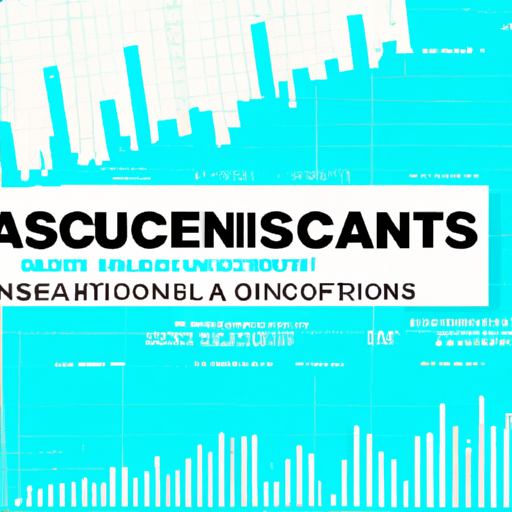-
Table of Contents
“IAS 37: Navigating the Complexities of Provisions, Contingent Assets and Contingent Liabilities.”
Introduction
IAS 37 – Provisions, Contingent Assets and Contingent Liabilities is a standard issued by the International Accounting Standards Board (IASB) that provides guidelines on the recognition and measurement of provisions, contingent liabilities, and contingent assets. It outlines the appropriate accounting treatment and disclosure for uncertain future events that may affect the financial position of a company. The standard aims to ensure that appropriate recognition criteria and measurement bases are applied to provisions, contingent liabilities, and contingent assets, and that sufficient information is disclosed in the notes to the financial statements to enable users to understand their nature, timing, and amount.
Understanding the Key Principles of IAS 37: Provisions, Contingent Assets and Liabilities
IAS 37 – Provisions, Contingent Assets and Contingent Liabilities is a critical standard in the International Financial Reporting Standards (IFRS) that provides guidelines on the recognition and measurement of provisions, contingent liabilities, and contingent assets. This standard is essential in ensuring that companies accurately represent their financial position and performance, thereby promoting transparency and accountability in financial reporting.
The key principles of IAS 37 revolve around three main elements: provisions, contingent assets, and contingent liabilities. Provisions are liabilities of uncertain timing or amount. They are recognized when a company has a present obligation as a result of a past event, it is probable that an outflow of resources embodying economic benefits will be required to settle the obligation, and a reliable estimate can be made of the amount of the obligation.
For instance, if a company is involved in a lawsuit, it would recognize a provision for the lawsuit if it is probable that it will have to pay damages and the amount can be reliably estimated. The provision should be measured at the best estimate of the expenditure required to settle the present obligation at the end of the reporting period.
On the other hand, contingent liabilities are possible obligations that arise from past events and whose existence will be confirmed only by the occurrence or non-occurrence of one or more uncertain future events not wholly within the control of the entity. They could also be present obligations that do not meet the recognition criteria.
For example, a company may be facing a lawsuit, but it is uncertain whether it will result in an outflow of resources. In this case, the company would disclose a contingent liability in the notes to the financial statements, but would not recognize it as a liability in the statement of financial position.
Contingent assets, the third element, are possible assets that arise from past events and whose existence will be confirmed only by the occurrence or non-occurrence of one or more uncertain future events not wholly within the control of the entity. Unlike contingent liabilities, contingent assets are not recognized in financial statements because this may result in the recognition of income that may never be realized. However, when the realization of income is virtually certain, then the related asset is not a contingent asset and its recognition is appropriate.
In conclusion, IAS 37 plays a crucial role in ensuring that companies accurately represent their financial position and performance. It provides clear guidelines on when to recognize provisions, how to measure them, and how to disclose contingent liabilities and contingent assets. By adhering to these principles, companies can enhance the credibility of their financial statements, thereby promoting transparency and accountability in financial reporting. Understanding these key principles is essential for both preparers and users of financial statements, as it enables them to make informed decisions based on accurate and reliable financial information.
The Impact of IAS 37 on Accounting for Provisions, Contingent Assets and Liabilities

IAS 37, also known as the International Accounting Standard 37, is a critical standard that has significantly impacted the accounting for provisions, contingent assets, and contingent liabilities. This standard, issued by the International Accounting Standards Board (IASB), provides a comprehensive framework for recognizing, measuring, and disclosing these financial elements, thereby ensuring transparency and consistency in financial reporting.
Before the introduction of IAS 37, there was considerable ambiguity and inconsistency in the accounting for provisions, contingent assets, and liabilities. Different entities had different interpretations and practices, leading to a lack of comparability and transparency in financial statements. However, with the advent of IAS 37, a more standardized approach was established, providing clear guidelines on when and how to recognize these elements.
IAS 37 mandates that a provision should be recognized only when an entity has a present obligation as a result of a past event, it is probable that an outflow of resources embodying economic benefits will be required to settle the obligation, and a reliable estimate can be made of the amount of the obligation. This has led to a more cautious and prudent approach in recognizing provisions, thereby reducing the risk of overstatement of liabilities and expenses.
In terms of contingent liabilities, IAS 37 has brought about a significant change by requiring entities to disclose them in the notes to the financial statements, even if the possibility of an outflow of resources is remote. This has enhanced the transparency of financial statements, as users are now provided with more comprehensive information about an entity’s potential obligations.
On the other hand, IAS 37 stipulates that contingent assets should not be recognized, but should be disclosed where an inflow of economic benefits is probable. This conservative approach ensures that entities do not prematurely recognize income, thereby maintaining the reliability of financial statements.
Moreover, IAS 37 has also introduced a rigorous measurement approach for provisions, contingent assets, and liabilities. It requires that the amount recognized should be the best estimate of the expenditure required to settle the present obligation, taking into account the risks and uncertainties surrounding the obligation. This has led to a more accurate and realistic representation of an entity’s financial position and performance.
However, the implementation of IAS 37 has not been without challenges. The standard’s reliance on judgments and estimates, particularly in determining the probability of an outflow of resources and the reliability of the estimate, has raised concerns about subjectivity and potential manipulation. Furthermore, the disclosure requirements, while enhancing transparency, have also increased the complexity and cost of financial reporting.
Despite these challenges, the impact of IAS 37 on the accounting for provisions, contingent assets, and liabilities has been largely positive. It has brought about greater consistency and comparability in financial reporting, improved the quality of information available to users, and enhanced the credibility of financial statements. As such, IAS 37 continues to play a pivotal role in shaping the accounting landscape for these critical financial elements.
A Comprehensive Guide to IAS 37: Managing Provisions, Contingent Assets and Liabilities
IAS 37, also known as the International Accounting Standard 37, is a critical accounting standard that provides guidelines on the recognition and measurement of provisions, contingent liabilities, and contingent assets. This standard is essential for businesses as it helps them manage their financial obligations and potential gains effectively.
IAS 37 is primarily concerned with provisions, which are liabilities of uncertain timing or amount. These could include obligations arising from a legal requirement or a company’s past practices or policies. The standard stipulates that a provision should only be recognized when there is a present obligation as a result of a past event, it is probable that an outflow of resources embodying economic benefits will be required to settle the obligation, and a reliable estimate can be made of the amount of the obligation.
The standard also provides guidance on contingent liabilities, which are potential obligations that arise from past events and whose existence will only be confirmed by the occurrence or non-occurrence of one or more uncertain future events not wholly within the control of the entity. According to IAS 37, a contingent liability is not recognized but is disclosed unless the possibility of an outflow of resources embodying economic benefits is remote.
On the other hand, contingent assets are potential assets that arise from past events and whose existence will be confirmed only by the occurrence or non-occurrence of one or more uncertain future events not wholly within the control of the entity. The standard advises that a contingent asset should not be recognized but should be disclosed where an inflow of economic benefits is probable.
IAS 37 also provides guidance on how to measure provisions. It states that the amount recognized as a provision should be the best estimate of the expenditure required to settle the present obligation at the end of the reporting period. This estimate should take into account the risks and uncertainties surrounding the obligation and reflect the present value of the expenditures expected to be required to settle the obligation.
The standard also emphasizes the importance of disclosing sufficient information to enable users of financial statements to understand the nature, timing, and amount of provisions, contingent liabilities, and contingent assets. This includes a brief description of the nature of the obligation, the expected timing of any resulting outflows of economic benefits, and an indication of the uncertainties about the amount or timing of those outflows.
In conclusion, IAS 37 is a comprehensive guide that helps businesses manage their provisions, contingent assets, and liabilities effectively. It provides clear guidelines on when to recognize and measure these items and emphasizes the importance of disclosing sufficient information to enable users of financial statements to understand their nature, timing, and amount. By adhering to this standard, businesses can ensure that they are accurately representing their financial position and are prepared for any potential future obligations or gains.
Q&A
1. Question: What is the main objective of IAS 37?
Answer: The main objective of IAS 37 is to ensure that appropriate recognition criteria and measurement bases are applied to provisions, contingent liabilities, and contingent assets.
2. Question: When should a company recognize a provision according to IAS 37?
Answer: A company should recognize a provision when there is a present obligation as a result of a past event, it is probable that an outflow of resources embodying economic benefits will be required to settle the obligation, and a reliable estimate can be made of the amount of the obligation.
3. Question: How does IAS 37 define a contingent liability?
Answer: IAS 37 defines a contingent liability as a possible obligation that arises from past events and whose existence will be confirmed only by the occurrence or non-occurrence of one or more uncertain future events not wholly within the control of the entity, or a present obligation that arises from past events but is not recognized because it is not probable that an outflow of resources will be required to settle the obligation or the amount of the obligation cannot be measured with sufficient reliability.
Conclusion
IAS 37 – Provisions, Contingent Assets and Contingent Liabilities provides a framework for the recognition and measurement of provisions, contingent liabilities and contingent assets. It ensures that appropriate recognition criteria and measurement bases are applied to provisions, contingent liabilities and contingent assets, and that sufficient information is disclosed in the notes to the financial statements to enable users to understand their nature, timing and amount. The standard promotes consistency in financial reporting and enhances the comparability of financial statements.

Comments are closed.